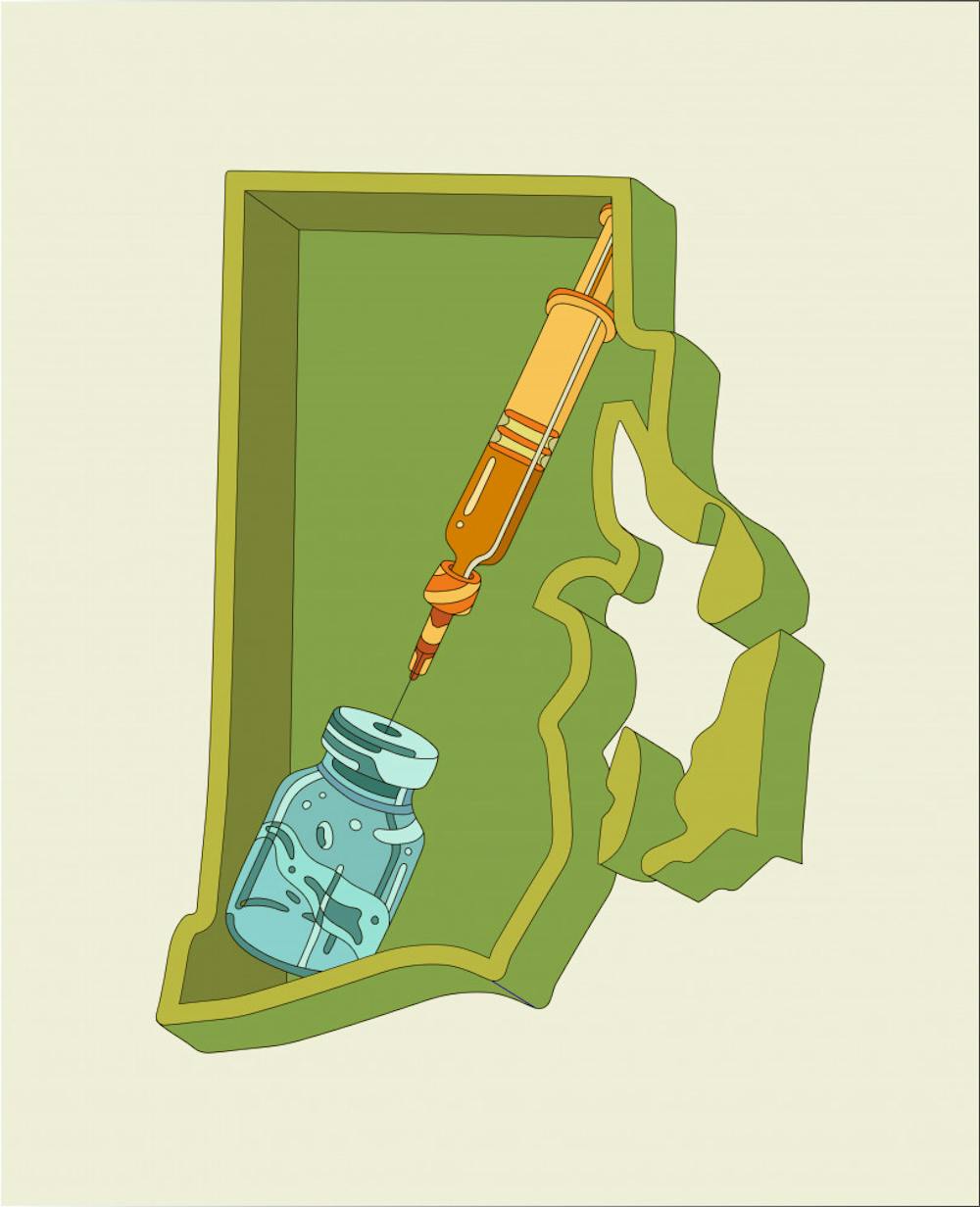In order to reduce the racial disparity in COVID-19 vaccination rates in Rhode Island, the state will hold two mass vaccination weekends for residents of color in the state.
These events, which aim to vaccinate 12,000 people in four days, were created in response to vaccine inequity amid a pandemic that has hit communities of color especially hard. Residents of color, especially Black and Indigenous residents, are being vaccinated at lower rates than white residents.
From April 10 to 11 and April 17 to 18, residents of color will be able to get vaccinated at the Dunkin Donuts Center in Providence and at a mass vaccination site at 1500 Diamond Hill Road in Woonsocket.
Luis Daniel Muñoz, a doctor, community organizer and member of the Governor’s Equity Council, said that reaching proportional vaccination rates is not enough.
“Black people and Latinos between the ages of 34 and 44 are three times more likely to be hospitalized compared to white individuals 74 to 85 years of age,” he told The Herald. “When you look at that risk from an equity standpoint, one would say that that population should have relatively more vaccines allocated to them based on the increased risk. But in Rhode Island you can’t even get an equal proportion.”
Harrison Tuttle, the executive director of Black Lives Matter Rhode Island PAC, agreed that equity was imperative. “All the disparities, both economic and criminal, that Black and Brown communities face have been piled on by this pandemic … These communities have been impacted the most by COVID,” he said.
The inequity in distribution led Tuttle, Muñoz and other community members to hold a press conference in front of the Rhode Island State House March 25, when they called for increased efforts to rectify the disparity.
Tuttle said he believed that the March 25 press conference “definitely had an effect” on the creation of the vaccination drive.
The vaccination event is the product of a significant amount of organizing efforts from community members and leaders, Muñoz said. Volunteers, officials and organizers have all worked to spread the word about the vaccination event, ensure that transportation is available and accessible and welcome people as they arrive at the vaccination sites. “We’ve had elected officials who are door knocking, who are legitimately canvassing, to see whether people in the community would like to get vaccinated,” Muñoz said.
Muñoz also stressed that people, especially undocumented community members, need to feel safe and welcome at the vaccination sites. “People need to get that sense of both security and feeling that they’re in a safe space,” he said.
“Those 15 or 30 minutes can transform someone’s life, not only in that they received a vaccine … but they’re understanding that there’s going to be a new healthcare system … that’s not going to forget them,” Muñoz said.
Ben Smith, a spokesperson for the City of Providence, described the large scale of the effort. “The City and our partners have performed intensive outreach targeting historically hard-to-reach populations within our neighborhoods hardest hit by COVID-19,” he wrote in an email to The Herald.
He also agreed with the importance of ameliorating the vaccine disparity. “It’s a vital next step to vaccinate all eligible residents in the communities hardest hit,” he wrote. “We want to ensure that these residents have priority access to the vaccine.”
“There exist significant challenges to vaccinating the most vulnerable members of our community, however, including language barriers and overcoming vaccine hesitancy,” he wrote.
Volunteers, including Mayor Jorge Elorza, recently went door-to-door to register community members for vaccination, according to Smith. The city has also tried to do more outreach to communities of color, including by placing advertisements in local Spanish-language radio stations and distributing flyers in multiple languages to increase awareness of the vaccine, Smith added.
Tuttle cited additional barriers to ending the disparity. Lack of transportation, financial resources and time due to working multiple jobs are often reasons members of communities of color are prevented from getting the vaccine, he said. Additionally, past actions by the medical industry and the government have led some to distrust the vaccine, he added.
But Muñoz said that the idea of hesitancy requires context. “The narrative of hesitancy is becoming this massive myth. … If you restrict information from getting to a population, and then you blame that population for being hesitant, that is not the fault of the population,” he said. “It’s the fault of the system that is not educating them.”
“Our hope is that with the amount of leaders coming together, with the amount of door knocking, with the solidarity we see here, it’s going to really empower our community,” Muñoz said. “Hopefully we can get to a summer where we’re seeing less lives lost and more families that are able to embrace each other again.”

ADVERTISEMENT




